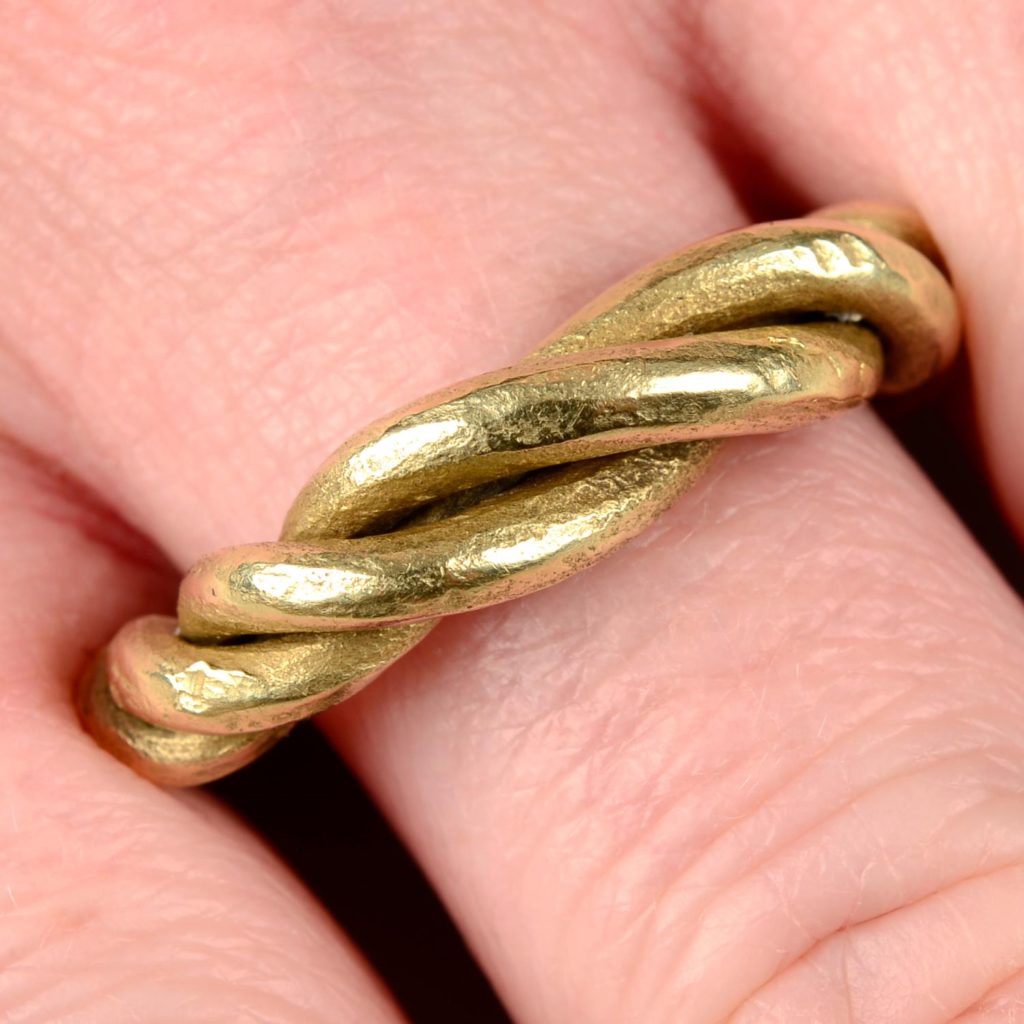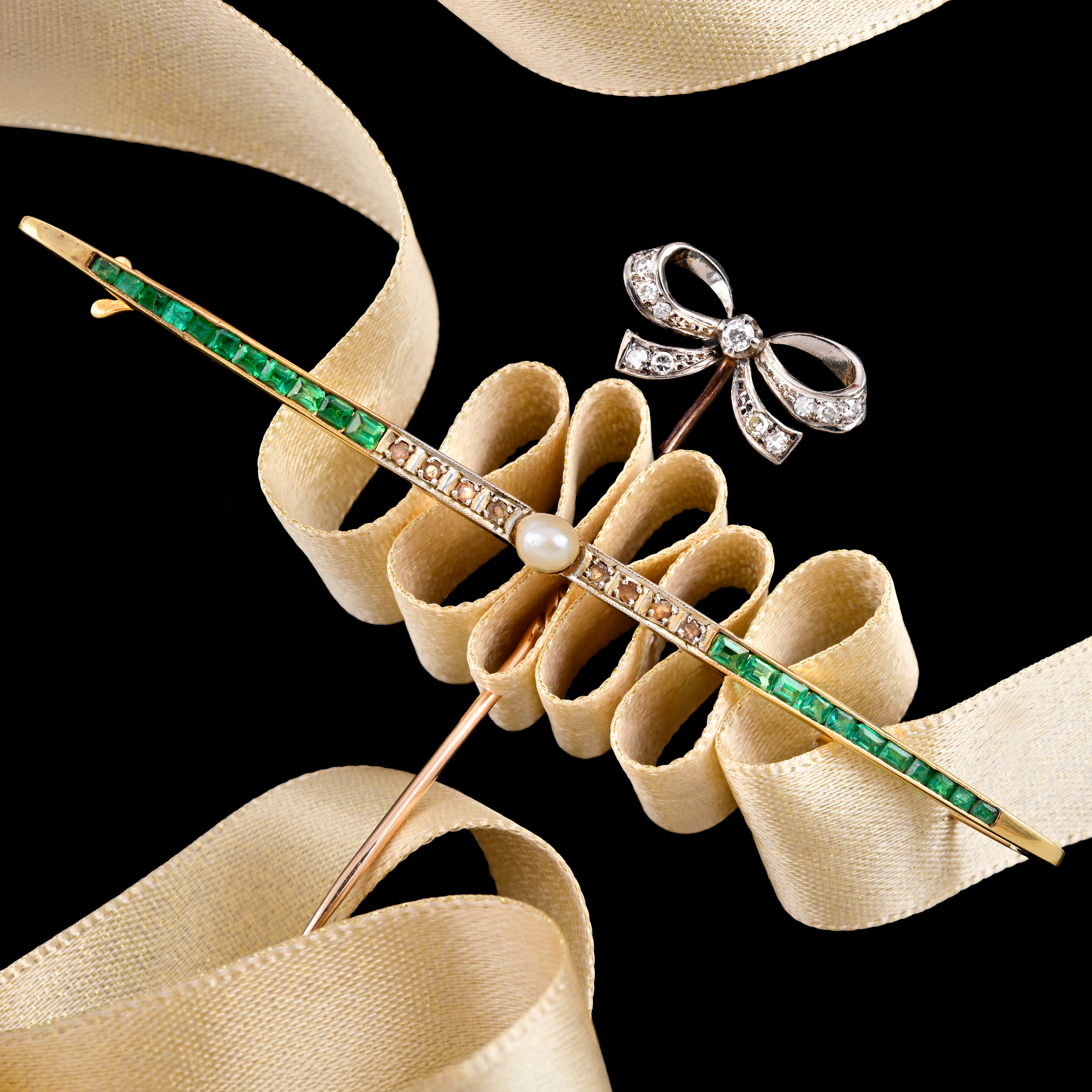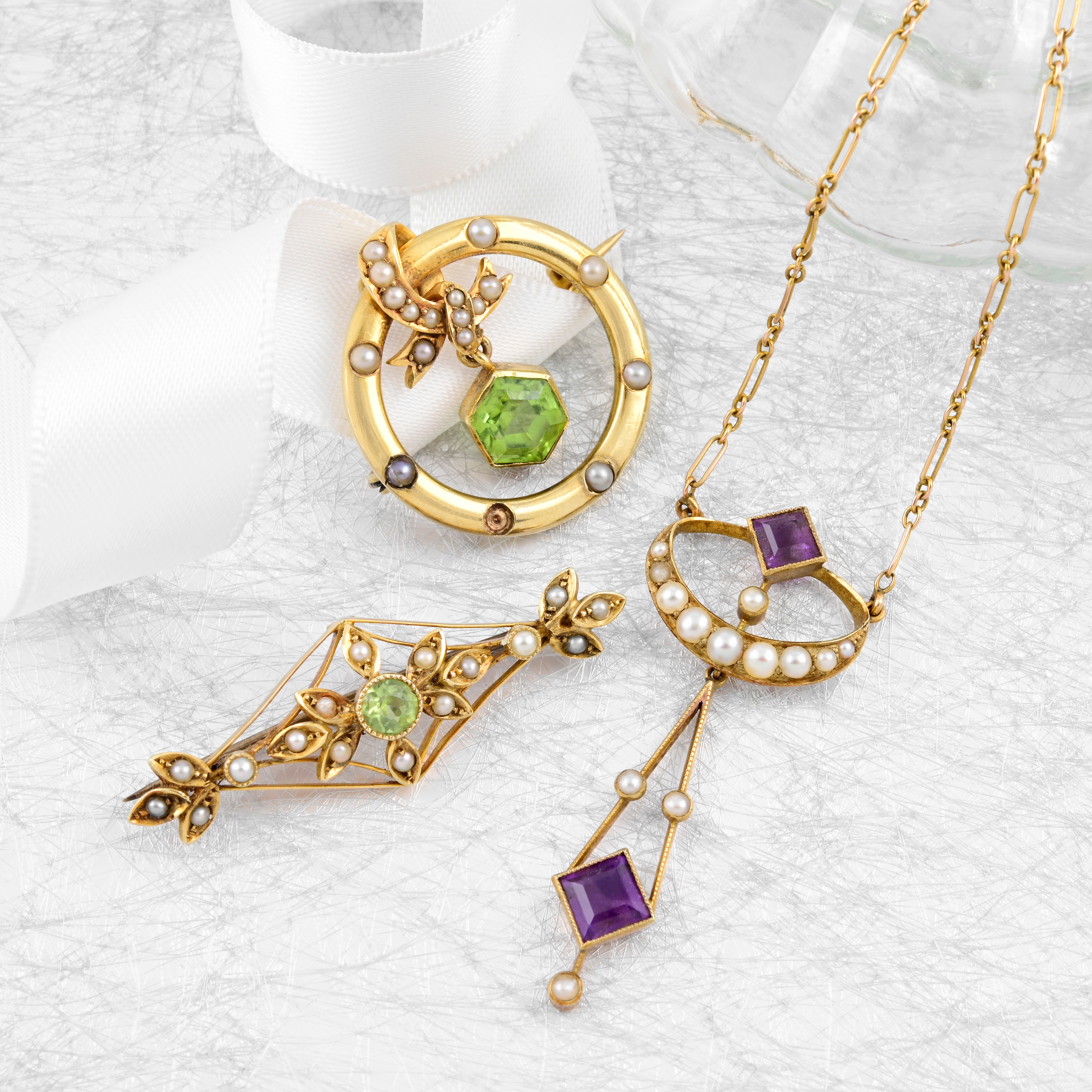Ancient Artefacts at Auction
One of the most fantastic areas of archaeology is the discovery of ancient jewellery. While we have paintings and poems made by people thousands of years ago, there is something particularly magical about being able to own and wear a ring that was worn by someone who lived during the time of the Roman Empire. As Fellows is renowned for jewellery auctions we are lucky to work with artefacts that have this magical quality to them, and with history embedded in the gold.
Ancient jewellery lots featured in our Fine Jewellery auction that took place on 13th April. Such lots were Lot 677 and Lot 509. The first is an intaglio ring dating from the 1st century AD. Although the mount is not as old as the stone, the carved carnelian is nearly 2,000 years old. The second is a beautiful braided Viking ring, dating from circa 950 AD, this ring is over 1000 years.
A Roman Intaglio
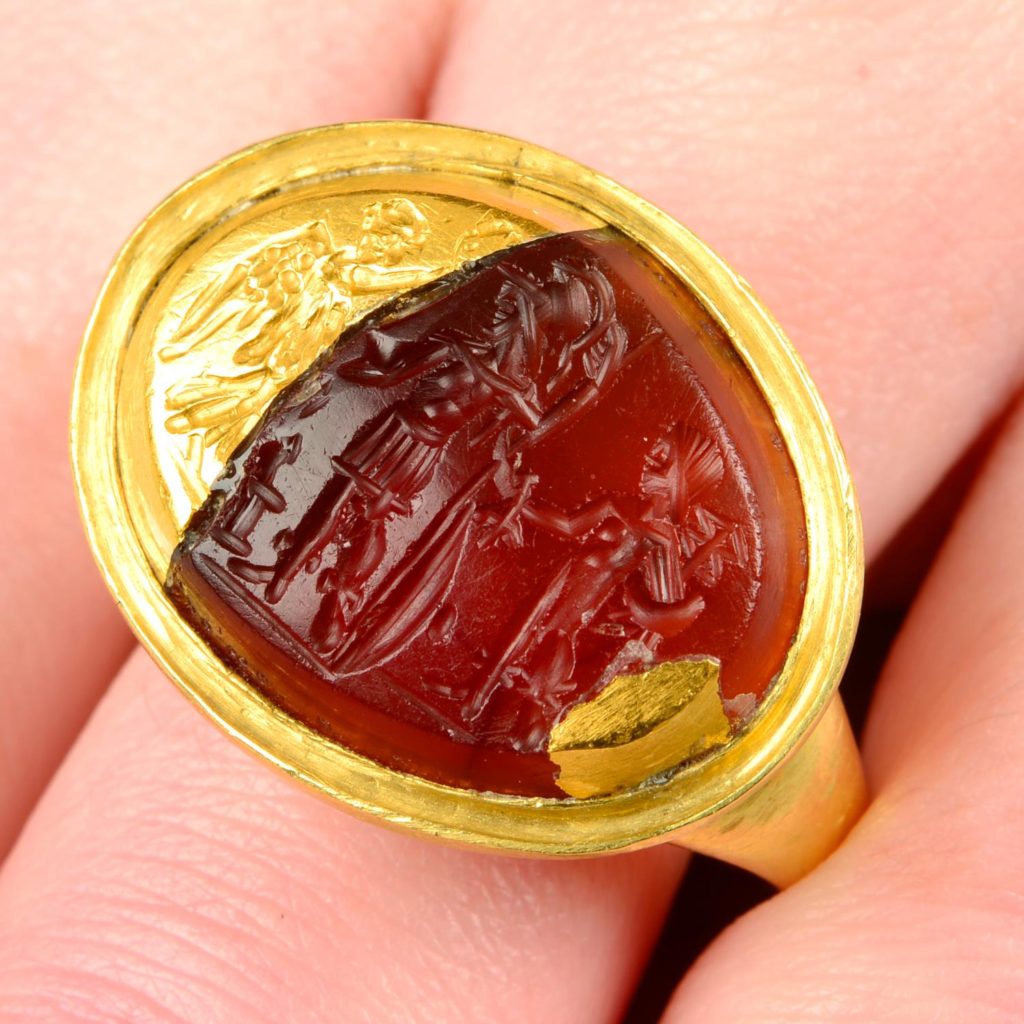
The Romans were particularly conscious of their appearance. This meant that they left behind a wide selection of gems, jewellery and adornments. Lot 677, is a beautiful example of a carved carnelian stone set in gold. The Romans were particularly fond of carnelian and it was used in all different types of jewellery.
In the ancient Mediterranean, this red stone had been in use since Bronze Age Crete, around 1800 BC. It then continued in popularity into the Roman Empire. In our sale, we also have modern and 18th-19th century carnelian pieces. It is quite fantastic to consider that these stones have been popular for 4,000 years! Our ring shows two warriors standing alongside the goddess Nike, the goddess of victory, who we see as winged.
For the Romans, carnelian intaglios such as these did not just serve purely decorative purposes. Carnelian does not stick to hot wax, therefore they were also used for seals. Typically, they were used for sealing letters or documents, in order to prove they had not been opened, but some sources suggest that they were also used for sealing bottles and jars. For some Roman elites, their seal acted like a signature with emperors and associates sometimes destroying their intaglio before their death so no one else could use their name in law.
A Viking Ring
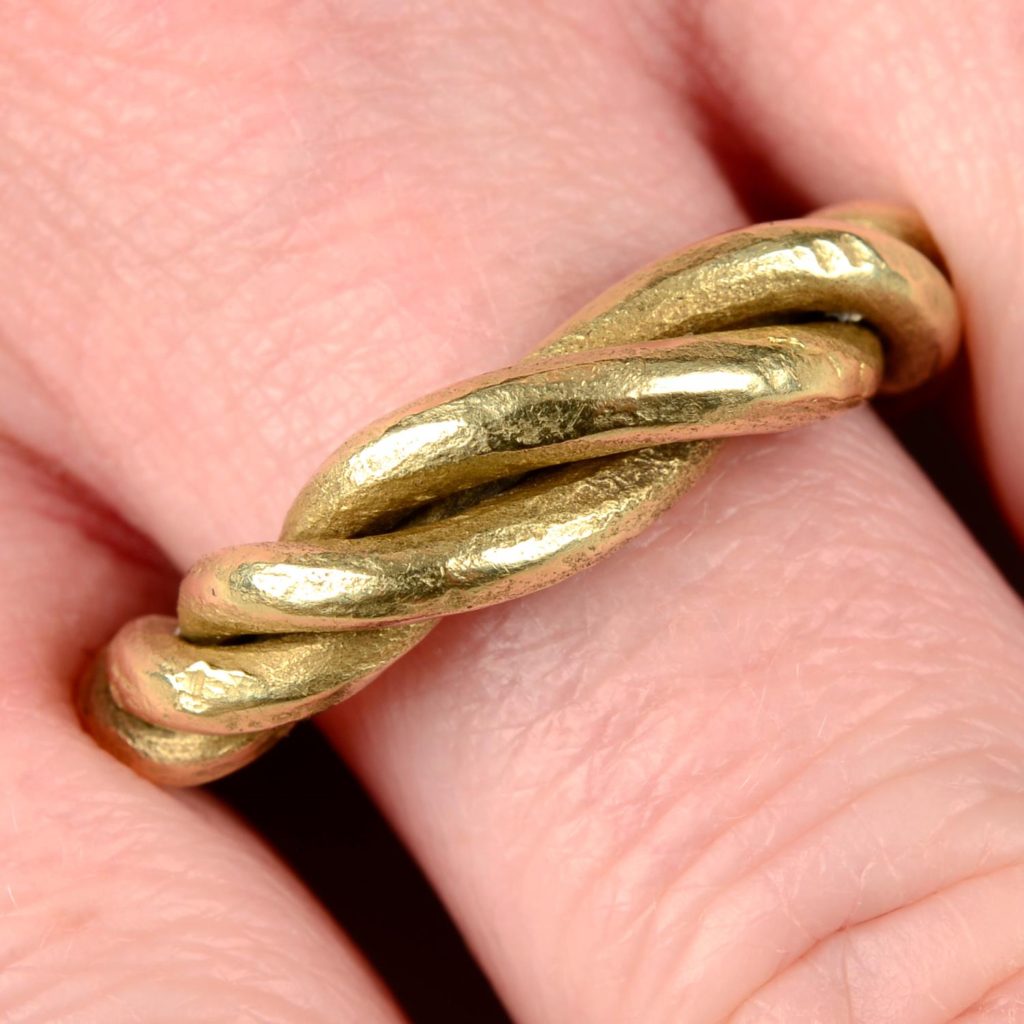
This ring – Lot 509 would have been constructed from two small hammered gold rods that were twisted together and tied to form the ring. Viking goldsmiths mastered these techniques, with other examples combining up to six individual rods. Whereas other similar rings appear to have been hammered at their ends to form a solid band, this ring instead has another rod twisted around it to complete the ring. This appointment contributes to the sophisticated nature of the ring, the maker having used a delicate hand.
In Viking culture jewellery was incredibly common, almost everyone - from the wealthiest to the poorest - had some ornaments in one form or another. The materials of that jewellery varied greatly, with base metals and plate being more common. The Viking Age has been called a silver age – silver dominated and gold was comparatively rarer. Vikings did little mining of their own, with much of their gold coming from looting and raiding before being melted down into new jewellery. As a result of this, gold was concentrated in the hands of the wealthy. Gold jewellery was something of prestige and was a public demonstration of wealth and power. This ring, then, is a superb example of a ring once owned by a significantly wealthy individual.
Rings of this style
Rings of this style may have originated with the Vikings in Scandinavia but they seem to have been exceedingly popular with Viking populations in Britain and Ireland. Twisted-rod rings may have had some use as a form of currency, they are mentioned in wills and charters as forms of payment. We know from Beowulf and other literature of the time, that rings played a crucial role in the relationship between a king and his men. It was considered the king's duty to distribute their gold. This would be amongst their warriors, supporters, and friends.
As such, the gifting of fine gold rings became the traditional way for a lord to reward the loyalty of their subjects. For Vikings, rings were the visible symbol of a bond between people, connecting people through gift-giving. Gifting rings often also formed part of an oath-making sacrament, and the rings in these cases were considered sacred. The exchanging of gifts bound the givers together not unlike the way in which the rods of our ring are twisted together – reliant on each other for their continued existence.
This ring, once belonging to a powerful individual, is a magnificent demonstration of Viking skills in goldwork and holds strong connections to traditions of gift-giving and oath-making.
Ancient Jewellery Highlights at Auction
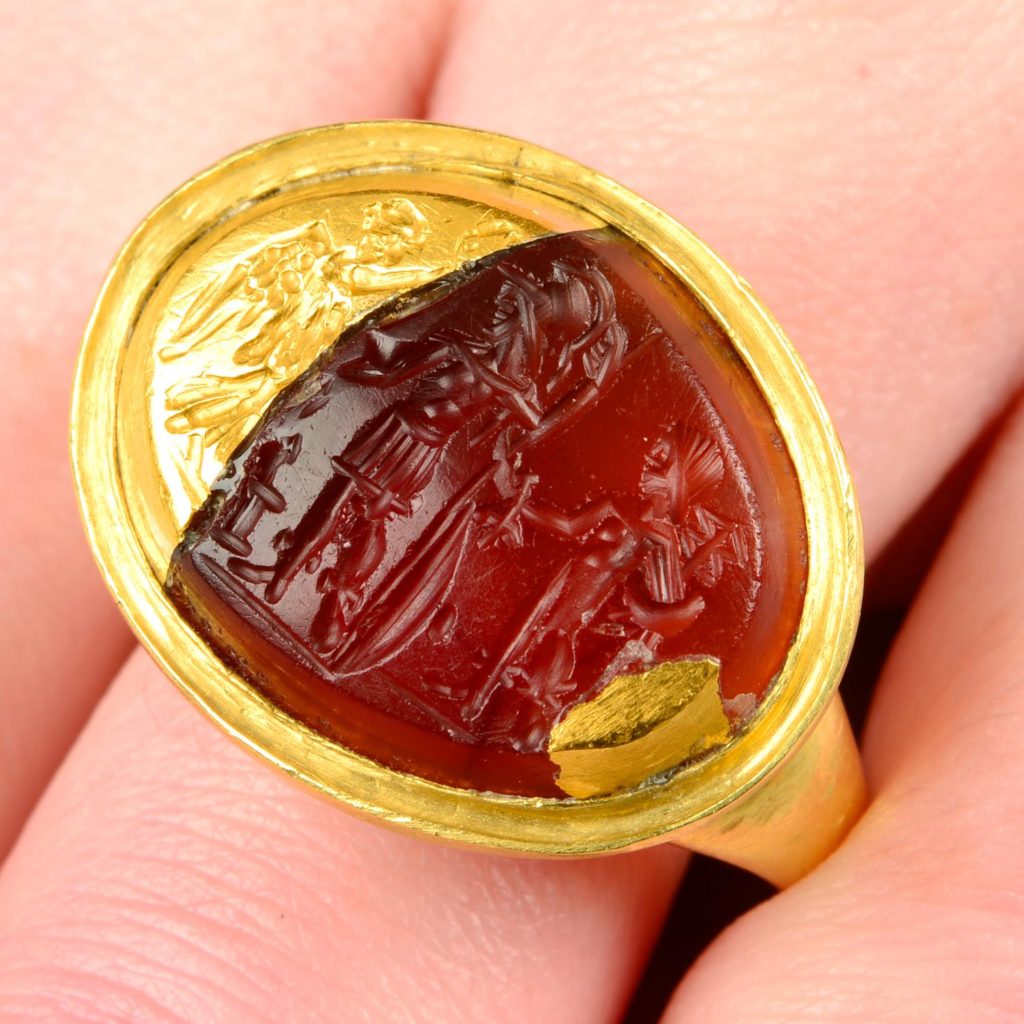
Lot 677 - 13/4/23
A carnelian intaglio circa 1st century AD, possibly depicting two warriors before Nike, the goddess of victory, with later mount.
Price Realised £2,210.00
Auction Details
Fine Jewellery - Thursday 13th April 2023
Make sure you don’t miss finding that special something by signing up for our emails. You’ll be the first to know when catalogues become available and preview the hottest lots from our auctions. You can also set up lot alerts, to tell us exactly what you are looking for. Our personal shopping service will make sure that you are the first to hear about it.
Valuations
Our valuations are free, with no obligation to sell with us. Our experts will value your item with an estimate, so you can find out what it could achieve at auction.
The process is simple. You can fill in a form online or book an appointment to visit either of our offices in Birmingham or London. Virtual valuation appointments are also available.
Cordelia Porter | BA (Hons), MRes
Nathan Boot | BA (Hons), MA (Hons)

